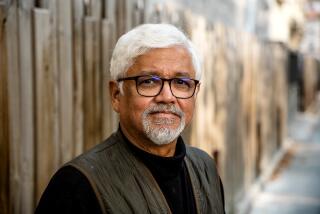DRUGS A THIRD PATH : Not a Crime or Social Ill, But a Controllable Disease : Britain stubbornly forges its own way in dealing with addiction, licensing doctors to prescribe âmaintenanceâ doses of opiates and amphetamines.
For more than 60 years, Britain has stubbornly insisted on making up its own mind about the best way to deal with its drug problem.
Drug âmisuse,â as the British call it, is substantial in the United Kingdom. With a population one-fifth the size of the United States, Britain is believed to have between 50,000-100,000 intravenous drug users, mostly of opiates and amphetamines. (In the United States, the National Institute on Drug Abuse estimates there are 1.2 million intravenous drug users). There has been some use of cocaine (as elsewhere in Europe), but it is not widespread and âcrackâ is rarely available.
In 1926, a committee headed by Sir Humphrey Rolleston, president of the Royal College of Physicians, set the course for British policy: Drug addiction is a disease. Doctors supply addicts to âmaintainâ (not cure) them so that they can âlead fairly normal and useful lives.â
Until recently, American physicians have shunned âaddiction medicine,â a blend of psychiatry, clinical pharmacology and, since AIDS, infectious-disease control. The British have been practicing a version of it for decades. Because Britainâs National Health Services, instituted soon after World War II, reimburses physicians who treat drug addicts, doctors are more willing to specialize in the field.
Nonetheless, addiction treatment in Great Britain has always been vaguely disreputable. The physician is frequently painted with the same brush as is the addict-patient. In part, this image is the result of a handful of doctors over-prescribing drugs to line their pockets in the 1960s and early 1970s. The abuses led to tighter regulations, special licensing for physicians treating addicts and the attachment of drug-dependency units to hospitals.
These changes still gave British physicians wide latitude in devising treatment plans to help addicts gain control over their drug habit. If these patients were able to hold steady jobs, have a family life and manage their drug use, treatment was considered successful. But treatment is still quite limited, and the newer multiple-drug users are more difficult to treat. This, in part, explains the rise in registered addicts, from 2,500 in 1970 to 15,000 in 1985. Yet this rate of increase was comparable to that in countries where drugs were illegal.
Before World War I, there were drug-maintenance clinics in several U.S. cities. One in New York had 7,000 patients on morphine. But the Harrison Narcotics Act of 1914 criminalized drug addiction and forbade maintenance treatment, thereby driving most doctors from the field. Some American physicians tried to continue their work in the 1920s--and went to prison for their efforts. That effectively put an end to the development of addiction treatment in the United States until methadone-maintenance programs emerged in the 1960s.
The British experience has generated a range of programs, including methadone- maintenance and detoxification clinics, and drug-free therapeutic communities. In addition to prescribing injectable drugs, physicians are now experimenting with smokeable forms of cocaine and heroin to reduce needle use and the AIDS risk, the focus of current treatment.
In 1987, the Advisory Committee on the Misuse of Drugs asserted that AIDS represents âa greater threat to individual and public health than drug use per se.â Accordingly, it urged that all funding for drug-treatment programs be dispersed under the AIDS program of the Department of Health, the same folks who run the National Health Service and employ more than 90% of British physicians.
Today, British doctors and all health-service agencies attempt to treat addicts in ways that reduce the spread of AIDS. More than 25 cities have programs for exchanging sterile needles. The Department of Health maintains highly visible public programs to educate addicts about the risk of injection and the safety of alternatives. I know a very proper British nurse who goes to her Liverpool clinic every morning to instruct addicts in safe injection practices. She shows them how to thoroughly clean the injection site (to prevent infections), provides a supply of sterile wipes and teaches methods that prevent damage to veins.
All this bespeaks a fundamentally different attitude and policy toward the treatment of drug addiction, and despite American pressure for a tougher approach, British resolve is firm. The British ask that their medical profession play an active role in a struggle that is fought case-by-case, as is always true in good medicine.
More to Read
Sign up for Essential California
The most important California stories and recommendations in your inbox every morning.
You may occasionally receive promotional content from the Los Angeles Times.










